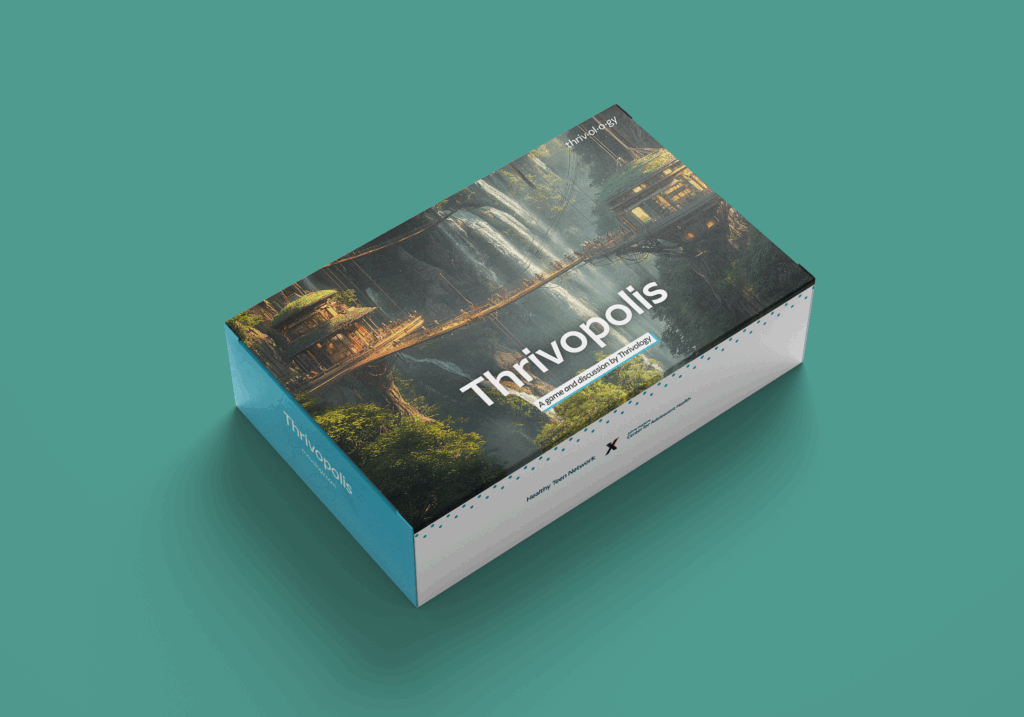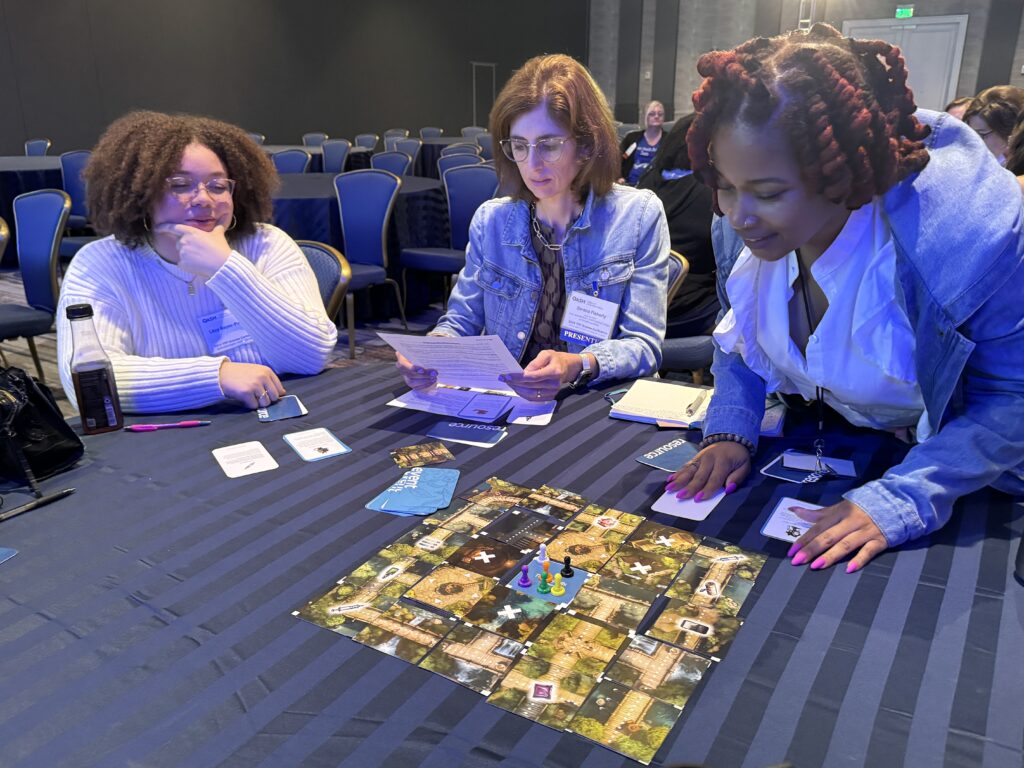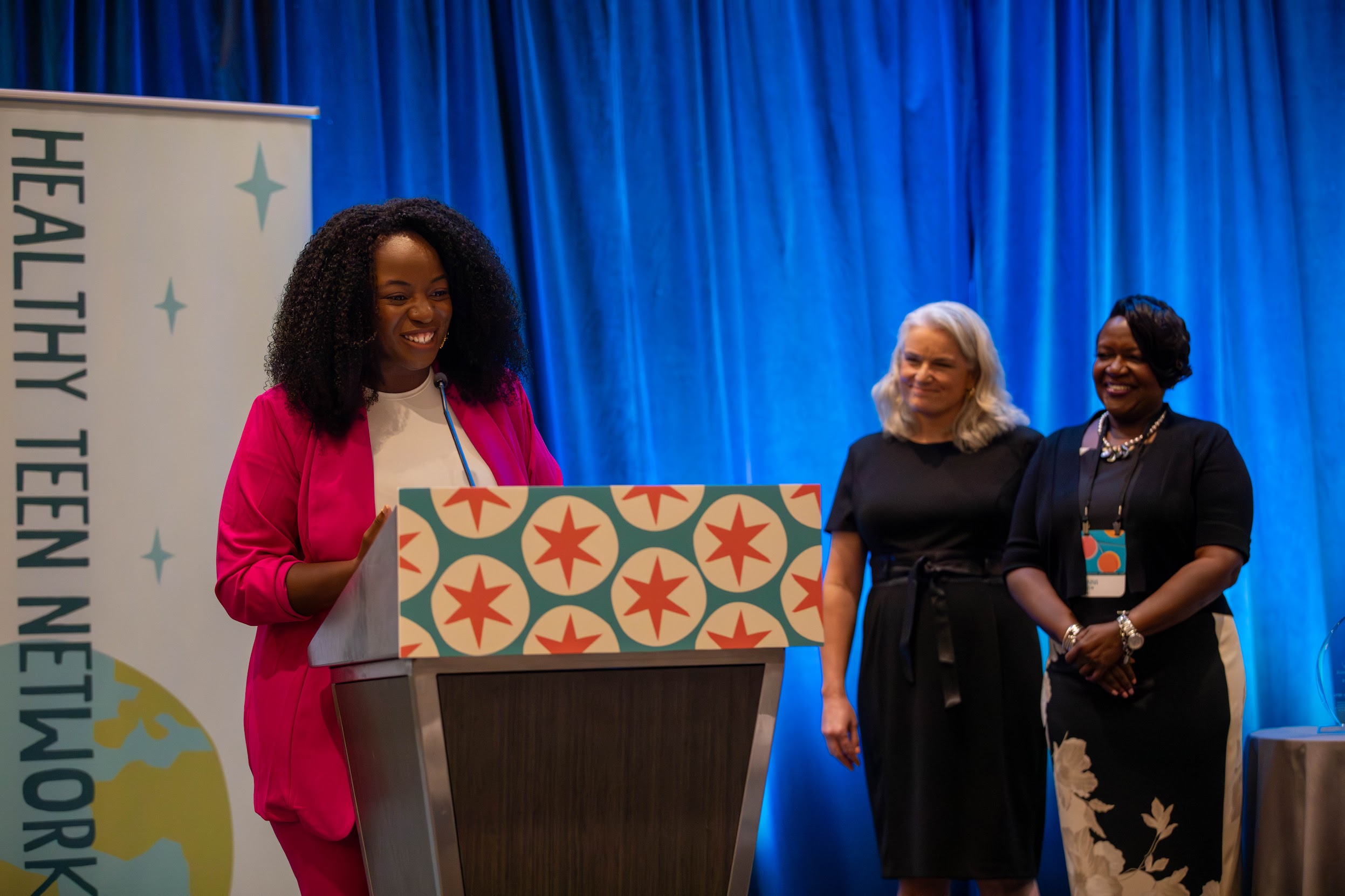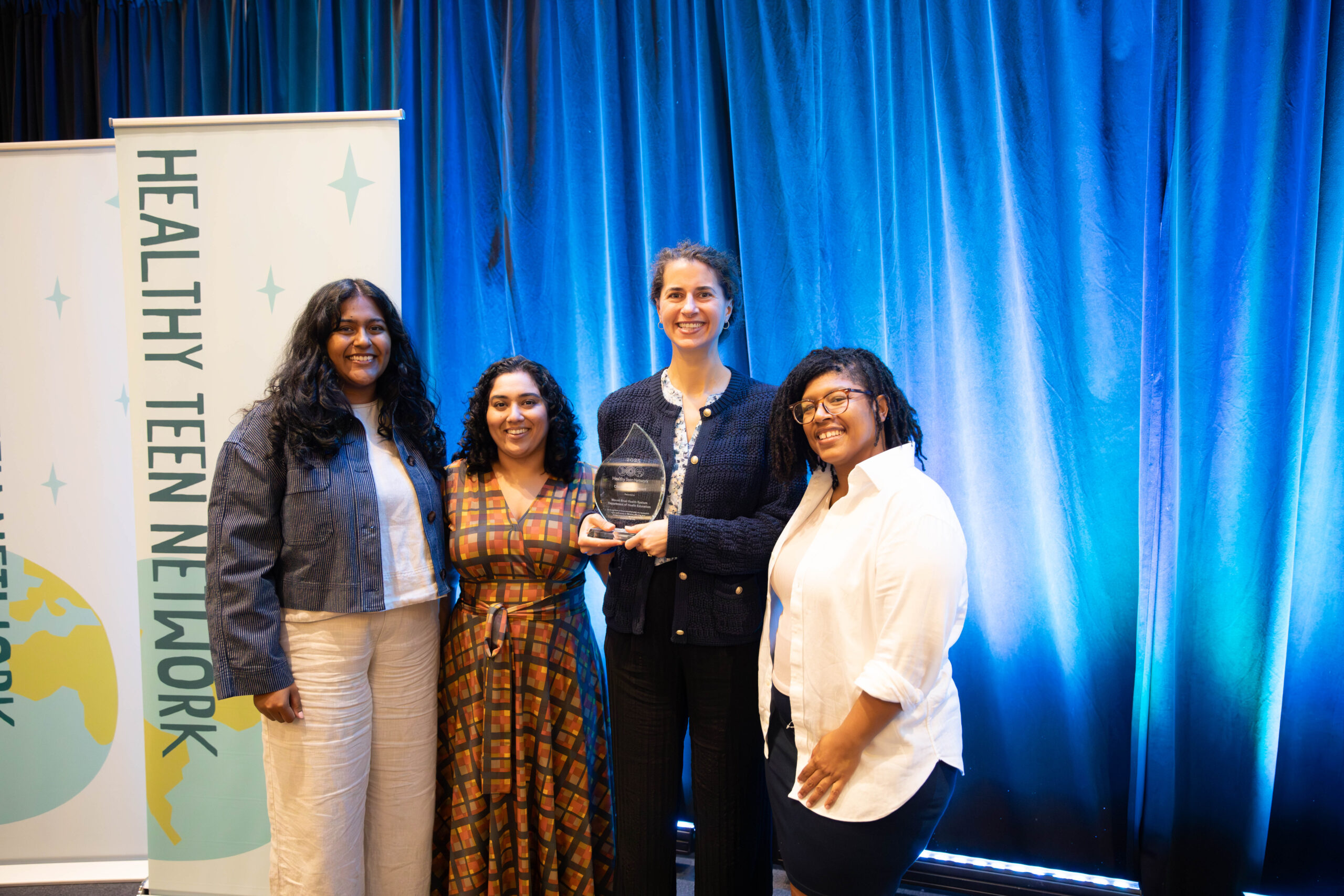B
ack in the age of dinosaurs, I was racking up an abundance of art history credits at a football-obsessed state university in the Northeast. While the zillions of artists, dates, and mediums I once memorized are now long forgotten, I still remember a professor who remarked “Nothing dates like the future”—before taking a sip from a very hip, Warhol-esque Campbell’s Soup-branded travel mug.
For reasons I can’t fully explain, that quote still rattles my skull. There is a poetic, paradoxical truth in it: Artistic depictions of the future say a lot more about our present hopes, anxieties, and values than anything else—certainly more than the actual, unforeseeable future.
A Few Seconds Later…
Over the course of two years, many remarkable, talented collaborators poked and prodded at problems, possibilities, and plotlines, stretching ideas to their very limits.
Here in the Anthropocene, Healthy Teen Network and Johns Hopkins Center for Adolescent Health recently introduced the first complete version of Thrivopolis, a game and discussion by Thrivology. From where I sit, this was a herculean effort. Over the course of two years, many remarkable, talented collaborators poked and prodded at problems, possibilities, and plotlines, stretching ideas to their very limits. Altogether, this culminated in Thrivopolis, a game and discussion where players take on the roles of youth-supporting professionals tasked with gathering valuable resources for the young people they support.
Besides working with so many others who enthusiastically brought their vast lived and professional experiences to our human-centered design playground, one of my favorite things about creating Thrivopolis was crafting the fictional game world that gazes upon humankind’s future. Thrivopolis’ front matter begins:
In the wake of the Great Unraveling in the not-so-distant future, a brave few set out to construct a utopian refuge high in the treetops. Born was Thrivopolis, a verdant, gleaming city in the lush embrace of the trees.

Future Promises
While traditional skill-building has its place in any youth-supporting professional’s toolbelt, I’d argue that Thrivopolis, with its imagined future, has the potential to leave a more lasting impression on those who play it.
Here’s a few reasons why I believe Thrivopolis offers a memorable experience that could spark real, lasting change:
- Immersive escapes foster a beginner’s mindset. We crafted striking, fantasy game-style, eco-futurist visuals and lively prose to transport player-participants into the future world of Thrivopolis. These player-participants are, in a sense, first-time visitors to our verdant, gleaming city, and thus well poised to take fresh eyes to its imagined boardwalks. This temporary escape serves another purpose: Free from the many can’ts and won’ts of real-life programs and services (“that won’t work here!”), player-participants are well poised to take a beginner’s mindset to the research-backed, adolescent health strategies it introduces.
- Games give clarity to complex systems. It’s easy to get lost in nuance when discussing complex topics like navigating the labyrinth of social service and healthcare programs after trauma. By crystalizing shifts in culture, policy, and resources into easy-to-understand logic, rules, and moves, Thrivopolis offers players an elegant, working theory for how these systems may interact in the real world. With any luck, this offers a lens that brings the real-world “big picture” into focus.

- Games evoke emotions. As any lover of games will tell you, there’s a giddy joy in pulling into the lead—and a sharp, stinging injustice in a skipped turn or an opponent’s ill-mannered move. During one pivotal session, Thrivology Research Alliance member Dana Thomas explained players “just feel a certain way,” after you change the rules of the game. (This hot take inspired us to include two rounds of gameplay with different rules.) Rule changes aside, just as stories go beyond facts to tap into emotions and inspire change, a game played with heart might be most suited to create a deep, lasting impact.
- Stepping into character brings joy. While an original intention of the eight Thrivopolis characters was to highlight the high degree of collaboration that professionals must engage in, what truly stood out during prototype testing was an entirely unexpected benefit: the sheer joy of playing as these characters! Imagine players perk up as their character is mentioned in an event card. Now imagine that that mention is paired with a fantastic action that adds unexpected depth and color to the world of Thrivopolis. Far from superfluous, I’d argue that these moments of delight in Thrivopolis are essential to maximizing learning and engagement.
- Play may spark lasting professional relationships. In our early research, over and over again, we heard of the need importance of relationship-building among professionals. But creating and nurturing professional relationships isn’t easy. Often, little time is protected for relationship building amongst busy schedules. When time is set aside, it can feel forced. Games, on the other hand, allow small groups of players to learn together, have fun, and debrief. If played with professionals across systems, Thrivopolis just might be the kind of alchemy that leads to more collaboration in real life.
Nicholas Sufrinko is a Senior Communications Manager at Healthy Teen Network and is the brand and creative lead behind many of our projects. You can often find him hiking, biking, or stargazing. Read more about Nick.








